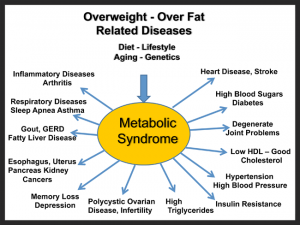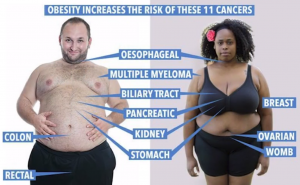

What To Do About the Worldwide Epidemic of Obesity and Diabetes
Paul A. Mabry MD
Please address questions or comments to the following email:
ZeroCarbDoc@gmail.com
Please join my Facebook Group – Zero Carb Doc

(anything in this color purple is a link that will take you to more information)
Here is what I think is the most important thing I can tell you: There is a raging epidemic in the world right now “The Metabolic Syndrome”. If you are not suffering from it then you certainly know many people who are as it is affecting at least two thirds of all people on earth. I suffered from it myself as you can see from the pictures above until I found low carb, high fat diets in 2011.

I will talk about Zero Carb in just a minute but first I want weigh in on what I feel is the most important thing to know about diet and health. There is overwhelming evidence that the current epidemic of obesity and diabetes which I like to call “Diabesity” is caused by refined sugar. This is encyclopedically documented in Gary Taubes’ wonderful book “The Case Against Sugar” and summarized nicely in this talk by Pediatric Endocrinologist Dr. Robert Lustig. So I say to everyone if you consume foods with added refined sugar of any kind you are running a high risk of joining the billions of people suffering from the Metabolic syndrome which is the first step on the road to diabetes and if there is no change in diet, that road leads almost inevitably to full blown diabetes.
 So how can a person tell if they are insulin resistant and have the metabolic syndrome? The Metabolic Syndrome is defined as having 3 of the following 5 conditions: central obesity, high blood pressure, high blood sugar, high serum triglycerides and low HDL Cholesterol if you have 3 of these you are definitely insulin resistant. No need to look further. The most accurate way that gives the earliest warning of the earliest stages of insulin resistance and thus the metabolic syndrome is the “Kraft Assay”. One expert on that is the engineer Ivor Cummins. He writes about that with the relevant scientific citation in this blog post. The test involves drinking 100 grams of glucose then taking a blood sample 5 times over the next 4 hours. You can actually do this at home with the online kit found at this website for Meridian Valley Labs.
So how can a person tell if they are insulin resistant and have the metabolic syndrome? The Metabolic Syndrome is defined as having 3 of the following 5 conditions: central obesity, high blood pressure, high blood sugar, high serum triglycerides and low HDL Cholesterol if you have 3 of these you are definitely insulin resistant. No need to look further. The most accurate way that gives the earliest warning of the earliest stages of insulin resistance and thus the metabolic syndrome is the “Kraft Assay”. One expert on that is the engineer Ivor Cummins. He writes about that with the relevant scientific citation in this blog post. The test involves drinking 100 grams of glucose then taking a blood sample 5 times over the next 4 hours. You can actually do this at home with the online kit found at this website for Meridian Valley Labs.
The next most accurate measurement is the “Glucose Clamp Technique” where insulin is infused into the bloodstream intravenously in response to a glucose challenge the amount of insulin required to maintain the glucose level at a set point is determined. This procedure is generally only done in research laboratories and not as a general screening test.
 There are 2 easier ways to tell if you are insulin resistant. The first is to get a routine Cholesterol Panel done. The Triglyceride/HDL Cholesterol ratio has been shown to closely mirror insulin resistance as this study shows(read the “Conclusion”}. If your Cholesterol Panel was done using U.S. style units (mg/dl) you can simply take your triglyceride number and divide it by the HDL Cholesterol number. If your report is in the European values of mmol/l (millimoles per liter) you must then multiply the value by 2.3 to get the correct ratio.
There are 2 easier ways to tell if you are insulin resistant. The first is to get a routine Cholesterol Panel done. The Triglyceride/HDL Cholesterol ratio has been shown to closely mirror insulin resistance as this study shows(read the “Conclusion”}. If your Cholesterol Panel was done using U.S. style units (mg/dl) you can simply take your triglyceride number and divide it by the HDL Cholesterol number. If your report is in the European values of mmol/l (millimoles per liter) you must then multiply the value by 2.3 to get the correct ratio.
If it is greater than 1.0 there is a good chance you are insulin resistant and you should proceed to the more sensitive HOMA-IR which is the test used to gauge insulin resistance in most clinical trials done recently. To calculate your HOMA-IR you will need to have your doctor order a fasting insulin level and fasting glucose test to be done at the same time. You then take these 2 numbers and plug them into a HOMA-IR calculator like this one on the internet or you can multiply the glucose by the insulin value then divide the product by 405. If yours is greater than 1 then you should be concerned and consider a Low Carb, High Fat diet even if you are not overweight because 10% of diabetics are not overweight.
 What should a person do if they are insulin resistant to avoid the high risk of diabetes, heart disease, dementia, cancer, blindness, kidney failure and all those other things that the metabolic syndrome brings? First, get rid of all added processed sugar. Depending on how serious your insulin resistance is you may also need to do one or all of the following:
What should a person do if they are insulin resistant to avoid the high risk of diabetes, heart disease, dementia, cancer, blindness, kidney failure and all those other things that the metabolic syndrome brings? First, get rid of all added processed sugar. Depending on how serious your insulin resistance is you may also need to do one or all of the following:
-
Limit daily carbohydrate consumption to less than 20 grams total carbohydrate (not net carbohydrates)
-
Limit protein to less than 1.5 grams of protein per day for every kilogram of weight you should weigh (0.68 grams of protein per day for every pound of weight you should weigh).
-
Get at least 70-80% of your calories from fat.
-
Pick a block of time called an “eating window” every day that is no longer than 8 hours in duration and do not consume anything that contains calories outside this window. This is called “intermittent fasting”.
-
Don’t weigh more often than once a month as scales give misleading information in the short run. Get an old light colored belt and a sharpie. Put the belt around your abdomen at the naval level once a week and mark your progress with the sharpie on the belt. You should lose between 3/4 and 1 1/4 pound per week if you are female and 1 to 1.5 lbs per week if you are male. You may lose a lot more the first 1-2 weeks if you cheat and weigh but this is mostly water weight in the early stages. I see many people get excited about this and then when the weight loss stalls in the 3rd and 4th week get despondent and quit low carb. That’s one of the reasons not to use the scale very often.
-
If you are not losing weight or if you are hungry outside your eating window the BIG SECRET is to increase the percent of calories you are consuming from fat, cutting back on protein by 0.1-0.2 grams per kilogram per day and narrowing the eating window by an hour or by being stricter with it if you left your eating window open a little wide on some days. I recommend getting 60-80% of calories from fat. Here’s a link to how I do that.
-
The worst thing you can do is start counting total calories. During your eating window keep track of carbs and protein but eat until you’re full. If you can’t stay within your carb and protein limits and do this then increase the fat content. Fat is very filling and it’s hard to eat a ton of really fatty foods.
This will reverse both the metabolic syndrome and diabetes in most cases.

So why would someone want to follow a Zero Carb way of eating like I do eating only meat, cheese, eggs, butter and drinking only water, tea and coffee without milk? Through videos like Dr. Barry Grove’s wonderful lecture called “Homo carnivoris”, and another great lecture by Dr. Michael Eades “Paleopathology and the Origins of the Paleo Diet”. I came to realize that 2 1/2 million years ago our evolutionary ancestors had formed a separate branch from the fruit and plant eating apes and with each evolutionary step had developed bigger brains and smaller guts so nothing but rich fatty meat in that small gut could have allowed them to maintain such a large brain and that it required even more fat in the diet every time they ratcheted the size of the brain up. This same material is presented in a more visually appealing format in the movie “The Perfect Human Diet“ where the moderator actually visits the laboratories of the scientists doing the research on Paleolithic diets to interview them. There are also natural experiments like the coastal Inuit of Alaska, the Nenets people of Siberia or the Maasai of Uganda that show a meat based diet leads to vigorous health with almost no consumption of plants and thus eating Zero Carb is an easy way to know you are eating a very healthy diet.
For me however the answer is Addiction. Sugar is as addictive as heroin or cocaine as Dr. Nicole Avena explains in this lecture. I was addicted to carbs and sugar. I couldn’t stop at one or two bowls of spaghetti squash, just a quarter of that low carb pizza and I could easily get out of control eating low carb nuts like walnuts, macadamia, and pecans, not to mention blueberries. Zero Carb makes it easy to avoid those “over-indulgences”. There is also evidence that a high fiber diet may be a risk factor for both the development of autoimmune diseases and flares of those diseases. I’ve posted about that here. After almost 8 years I am very comfortable with my Zero Carb diet and would not want to go back to a more Atkin’s, Paleo or Keto style low carb diet though they seem to work perfectly for many people who apparently do not have the tendency to addictive eating.
 One of the most common question I get about low carb, high fat diets of all types, not just Zero Carb is “Isn’t this going to cause me to have a Heart Attack”. The answer is an emphatic “no”, in fact, just the opposite is true. LCHF diets are the best way to avoid a heart attack. Yes, your total and LDL Cholesterol is likely to rise but these markers have nothing to do with heart attacks. The important tests found on a Cholesterol Panel that suggest you’re in trouble are a Low HDL Cholesterol, a high serum Triglycerides and elevated levels of small, dense LDL Cholesterol particles. You need an NMR Cholesterol panel to measure the amount of small dense LDL Particles which most doctors rarely do. Eating LCHF will make all these risk markers as well another significant risker mark C-Reactive Protein (CRP) which measures inflammation go well into the green zone. Cholesterol is an innocent bystander in the crime of heart disease. I blogged about that here.
One of the most common question I get about low carb, high fat diets of all types, not just Zero Carb is “Isn’t this going to cause me to have a Heart Attack”. The answer is an emphatic “no”, in fact, just the opposite is true. LCHF diets are the best way to avoid a heart attack. Yes, your total and LDL Cholesterol is likely to rise but these markers have nothing to do with heart attacks. The important tests found on a Cholesterol Panel that suggest you’re in trouble are a Low HDL Cholesterol, a high serum Triglycerides and elevated levels of small, dense LDL Cholesterol particles. You need an NMR Cholesterol panel to measure the amount of small dense LDL Particles which most doctors rarely do. Eating LCHF will make all these risk markers as well another significant risker mark C-Reactive Protein (CRP) which measures inflammation go well into the green zone. Cholesterol is an innocent bystander in the crime of heart disease. I blogged about that here.
Here is a list of health conditions that are related to Insulin Resistance and The Metabolic Syndrome. Just click on the name of the condition for the scientific reference showing the connection.
-
CANCER – Here’s a diagram of all the cancers linked to obesity and the metabolic syndrome.

-
BLINDNESS – “Diabetic retinopathy (DR) is a leading cause of vision-loss globally. Of an estimated 285 million people with diabetes mellitus worldwide, approximately one third have signs of DR”.
-
STROKE – “Diabetes is an important modifiable risk factor for stroke, especially ischemic strokes. Hyperglycemia during the acute stroke phase is associated with poor outcomes in both ischemic and hemorrhagic strokes.”
-
HEART ATTACK – “Adults with diabetes are two to four times more likely to die from heart disease than adults without diabetes.”
-
HEART FAILURE – “Evidence from clinical trials repeatedly confirms the association of diabetes with heart failure, independent of hypertension, atherosclerosis, coronary artery disease and valvular heart disease. “
-
AGE-RELATED MACULAR DEGENERATION(AMD) – “Studies based on longitudinal cohort, cross-sectional, and case-control associations, reporting evaluation data of diabetes as an independent factor for AMD were included.
-
PERIPHERIAL ARTERIAL DISEASE (PAD) – “If you have diabetes, you’re much more likely to have PAD”
-
GOUT – “There is an article reporting that 86% of patients with gout have metabolic syndrome (15).”
-
POLYCYSTIC OVARY SYNDROME (PCOS) – “It has been reported that in the USA almost 50% of women with PCOS present the metabolic syndrome.”
-
NONALCOHOLIC FATTY LIVER DISEASE (NAFLD) – “As with other complications of metabolic syndrome, insulin resistance is thought to be an underlying etiology of NAFLD.”
-
OSTEOARTHRITIS (OA) – “Obesity is associated with an increased risk of developing osteoarthritis (OA), even in non-weight bearing joints. High levels of adipose tissue-associated inflammation may explain this association.”
-
ALZHEIMER’S DISEASE – “Scarier still, researchers now understand that insulin resistance is the driving force behind most cases of garden-variety Alzheimer’s Disease.” Here’s a study directly linking the Metabolic syndrome to Dementia.
-
PARKINSON’S DISEASE – “There is growing evidence that patients with Type 2 diabetes have an increased risk of developing Parkinson’s disease and share similar dysregulated pathways suggesting common underlying pathological mechanisms. Historically insulin was thought solely to be a peripherally acting hormone responsible for glucose homeostasis and energy metabolism. However accumulating evidence indicates insulin can cross the blood-brain-barrier and influence a multitude of processes in the brain including regulating neuronal survival and growth, dopaminergic transmission, maintenance of synapses and pathways involved in cognition”
-
AMPUTATIONS – “Most literature indicates that diabetes is the largest cause of “non-traumatic” LEAs. Our findings seemed to indicate that diabetes was the largest cause or indication of total LEAs.”
-
KIDNEY FAILURE/DIALYSIS – “In the United States the two leading causes of kidney failure, also called end stage kidney disease or ESRD, are diabetes (also called Type 2, or adult onset diabetes) and high blood pressure” (both are caused by insulin resistance in most cases).
-
SLEEP APNEA(OSA) – Research demonstrates the likelihood of a relationship between type 2 diabetes and obstructive sleep apnoea (OSA), the most common form of sleep disordered breathing. The IDF consensus statement on sleep apnoea and type 2 diabetes aims to raise awareness of the association between the two conditions, which have significant implications on public health and on the lives of individuals.
-
HEARING LOSS – A recent study found that hearing loss is twice as common in people with diabetes as it is in those who don’t have the disease. Also, of the 84 million adults in the U.S. who have prediabetes, the rate of hearing loss is 30 percent higher than in those with normal blood glucose.
-
PSORIASIS – Patients with psoriasis were more insulin resistant compared with healthy control subjects. This supports that psoriasis may be a prediabetic condition.
-
LOW SPERM COUNT – There is now emerging evidence that male obesity impacts negatively on male reproductive potential not only reducing sperm quality, but in particular altering the physical and molecular structure of germ cells in the testes and ultimately mature sperm. Recent data has shown that male obesity also impairs offspring metabolic and reproductive health suggesting that paternal health cues are transmitted to the next generation with the mediator mostly likely occurring via the sperm.
-
LOW TESTOSTERONE – This interesting study documents the precipitous rise in 2 testosterone related conditions associated both with the metabolic syndrome and lower fertility, vitality and sexual performance: Late-Onset Hypogonadism (LOH, atrophied testicle in late life) and Androgen Deficiency (Not enough Testosterone)
-
ERECTILE DYSFUNCTION – Erectile Dysfunction (the inability to get an erection) has also been linked closely with the metabolic syndrome.
-
UTERINE FIBROID TUMORS (LEIOMYOMAS) – “CONCLUSION: Uterine leiomyomas may share pathogenic features with the development of metabolic syndrome.”
-
Enlarged Prostate – The enlargement of the prostate gland with it’s accompanying, painful, difficult and frequent urination with frequent nighttime awakenings to urinate is seen much more commonly in people with the metabolic syndrome.
-
Glaucoma – This new study indicates a low carb, high fat, ketogenic diet can reverse the process that leads to glaucoma which is due to nerve damage. In this study mice with nerve damage that usually led to glaucoma were put on a ketogenic diet. After just 8 weeks improvement in the function of the damaged nerves that usually lead to glaucoma was seen. We know a ketogenic diet is great for the nervous system as it can prevent over 50% of childhood seizures and has now shown benefit in reversing Alzheimer’s symptoms. The benefits of low carb just keep growing. Here’s a quote from the study: “Eight weeks of the diet generated mitochondria, improved energy availability by reversing monocarboxylate transporter decline, reduced glial hypertrophy, protected retinal ganglion cells and their axons from degeneration, and maintained physiological signaling to the brain. A robust antioxidant response also accompanied the response to the diet. These results suggest that energy compromise and subsequent axon degeneration in the D2 is due to low substrate availability secondary to transporter downregulation.”
-
Early Onset Sexual Maturity in Children – The appearance of sexual markers such as pubic hair, body odor and increased oil production in children called “Adrenarche” a part of the puberty process is driven by male hormones and normally starts around 8 years old for girls and 9 years old for boys. In children who develop the metabolic syndrome (an ever increasing problem) it tends to happen earlier. According to the Wikipedia this can be a problem because there are studies showing a higher incidence of a condition called Polycystic Ovarian Disease, a painful disorder causing menstrual irregularities and infertility in girls who experience premature adrenarche and more acne problems in both boys and girls.
-
Deep Venous thrombosis(DVT). The findings showed that 68% of those with DVT were also diagnosed with at least one of the components of metabolic syndrome. DVT patients with one component of metabolic syndrome had a 14% risk of additional blood clots, and those with two components had a 21% risk. For those with three components, that risk was 30%, and for those with all four components, the risk rose to 37%.
- Gallstone Disease (GSD). Quote: “GSD appears to be strongly associated with MetS, and the more the components of MetS, the higher the prevalence of GSD.”
-
Sarcoidosis. Quote: “Patients with sarcoidosis have a 7.66 relative risk for MetS, whereas they also have a 5.48 relative risk of insulin resistance development.”
-
Carpal Tunnel Syndrome: Quote: “ In conclusion, metabolic syndrome was found to be three times more common in patients with CTS and CTS was more severe in patients with metabolic syndrome when compared with those without metabolic syndrome.”
-
Dupuytren’s Disease (DD) in which the tendons of the hand become inflamed fuse and contract is also associated with insulin resistance. Here’s a quote from this article, Clinical associations of Dupuytren’s disease “The association with diabetes mellitus (DM) is well recorded, with a reported prevalence of between 3% and 32%,33 and an average of around 20%. It is equally common in both type 1 and type 2 diabetes, although it occurs at a younger age in patients with type 1 diabetes.34 DD occurring in diabetic patients is different from the condition in non-diabetic patients. There is a lower incidence of contractures, and fewer cases require surgery.33 Usually DD is more common in men, but in diabetic patients the sex ratio is equal.35”
-
Barrets Esophagitis and Esophageal Carcinoma. Here’s a quote from the Study: “ Findings revealed an increased risk of BE in relation to the presence of MetS, vs control groups. These observations can assist health practitioners by revealing a treatable risk factor for the most crucial risk factor for esophageal carcinoma (ie, BE).”
-
Multiple Myeloma. Here’s a quote from the study: “The authors, including corresponding author Elena Izkhakov, MD, of Tel Aviv Sourasky Medical Center in Israel, note that most patients with MM are diagnosed in their 60s and 70s, and roughly 1 in 5 of those patients will have already been diagnosed by diabetes at the point of MM diagnosis. MM has also been linked with higher rates of hypertension and obesity.”
-
Hypercoagulability (susceptibility to blood clots): Here’s a quote from the linked article: “The metS affects the thrombogenicity of circulating blood. Apart from its effect on platelets, a procoagulant and hypofibrinolytic state has been identified; mainly the result of the inflammatory state, dyslipidemia, and liver fat accumulation that accompany the MetS. Among haemostasis disturbances, the strong rise in the inhibitor of plasminogen activator type 1 plasma level is the most documented abnormality implicating the participation of the oxidative stress and inflammatory state developed during the metS.” This means that metabolic syndrome makes the blood clot much more easily leading to blood clots, especially in the legs which can break off and go to the lungs causing a fatal Pulmonary Embolism and the clots in heart arteries that precede a heart attack.
-
Stroke: The more severe the metabolic syndrome the more likely you are to have a stroke. Here’s a quote from the study: “Ischemic stroke risk increased over the spectrum of MetS [metabolic syndrome] severity in the absence of baseline diabetes mellitus, further implicating potential etiologic risks from processes underlying MetS. Individuals with elevated MetS severity should be counselled toward lifestyle modification to lower ischemic stroke risk.”
-
Acid Indigestion (GERD): Here’s a quote from the article: “Insulin resistance is the disturbance of glucose regulation characterized by higher insulin level. In clinical context, insulin resistance can manifest as abnormalities that are related with cardiovascular event risk, known as metabolic syndrome. Several studies had reported that insulin resistance was associated with erosive esophagitis in patients with gastroesophageal reflux disease (GERD).”
-
Complications after surgery: Wounds just don’t heal as well in people with metabolic syndrome. Here’s a quote from the article: “MetS has been an independent risk factor for complications after gastrectomy. For the individualized prediction of postoperative complications”
-
Overactive Adrenal Gland (Primary Hyperaldosteronism): According to the article 80% of patients in which both adrenal glands were found to be overactive had the metabolic syndrome and 65% of the patients with just one overactive adrenal gland had it.
-
Alopecia Areata (Bald patches of the scalp and beard): According to the article, people with this condition were 5 times more likely to have Metabolic Syndrome than controls.
-
Demodex folliculorum mite infestation: This mite has been found infesting the skin of most humans. When mite levels are high it is associated with both Rosacea (a disfiguring rash of the face) and Seborrhea (a scaling rash seen on face). Demodex infestation is found in much higher concentrations in people with the metabolic syndrome.
-
Kidney Stones: The risk of kidney stones is much greater in people who are insulin resistant and all people with Metabolic syndrome are insulin resistant by definition. It seem to interfere with the kidney’s ability to acidify urine to keep several chemicals from crystalizing.
 What is the second epidemic I see growing all over the world? After the metabolic syndrome the next most frequent cause of poor health that I saw in my 26 years of practice are issues related to chronic stress like poor sleep, chronic fatigue, migraine headaches, irritability, gut disruption, eczema, . These are some of the more common of the many problems Chronic stress can produce. Stress produces high cortisol levels in the body. We can’t live without cortisol and when we lived in the forest and a tiger would occasionally come into our area or we would confront a poisonous snake or cortisols would spike then go down. Now many people have high pressure jobs and lives and their cortisol is elevated all day only to return home to more stress from the responsibilities of family and in some cases a second job. Chronically elevated cortisol will weaken our immune system and lower our resistance to infectious disease like colds and flu leading to longer more severe courses of these conditions. It elevates our blood pressure by causing salt retention. It slows wound healing and increases our risk of athletic injury. And finally a significant amount of people develop what are known as Somatoform disorders. I have blogged about these and the their treatment as well as the treatment of stress in this post.
What is the second epidemic I see growing all over the world? After the metabolic syndrome the next most frequent cause of poor health that I saw in my 26 years of practice are issues related to chronic stress like poor sleep, chronic fatigue, migraine headaches, irritability, gut disruption, eczema, . These are some of the more common of the many problems Chronic stress can produce. Stress produces high cortisol levels in the body. We can’t live without cortisol and when we lived in the forest and a tiger would occasionally come into our area or we would confront a poisonous snake or cortisols would spike then go down. Now many people have high pressure jobs and lives and their cortisol is elevated all day only to return home to more stress from the responsibilities of family and in some cases a second job. Chronically elevated cortisol will weaken our immune system and lower our resistance to infectious disease like colds and flu leading to longer more severe courses of these conditions. It elevates our blood pressure by causing salt retention. It slows wound healing and increases our risk of athletic injury. And finally a significant amount of people develop what are known as Somatoform disorders. I have blogged about these and the their treatment as well as the treatment of stress in this post. 
